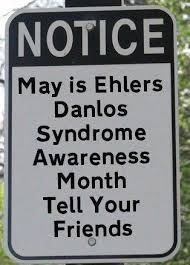Basic Emergency Care Planning for EDS Patients
Creating an emergency plan document is essential for patients with Ehlers-Danlos syndrome (EDS) and its many comorbidities, especially allergic or mast cell activation reactions. Take time to prepare in advance for an emergency before you get hit by a crisis by following these step-by-step instructions for your own safety and well-being.
Create a written plan to print and share with Emergency Medical Services (EMS) or emergency responders where you list patient information:
Simplified patient medical history with allergic reactions and emergency care protocols required for safety. Try using a simple printed document or an app such as
- MyChart: This app allows patients to access their medical records, schedule appointments, and communicate with their healthcare team.
- CareZone: This app helps patients to manage their health by tracking medications, monitoring vital signs, and organizing medical information. It also includes a feature for creating an emergency plan and sharing it with family members and healthcare providers.
- Google Health: This platform allows patients to store and manage their health information, including emergency plans, medical records, and medications. It also includes tools for scheduling appointments and communicating with healthcare providers.
- Apple Health: This app allows patients to store and manage their health information, including emergency plans, medical records, and medications. It also includes tools for tracking vital signs and scheduling appointments.
- MyMedicationList: This app helps patients to manage their medications, including reminding them when to take their medications and alerting them to potential drug interactions. It also includes a feature for creating an emergency plan and sharing it with family members and healthcare providers.
- Emergency bracelets with online data storage: Some emergency bracelets with barcodes allow to store medical information in a cloud online that can be easily accessed by scanning the code on the bracelet.
For more alternatives, read:
- List of best medical documentation apps
- Other medical information and data app suggestions
- Service that helps create medical printed binders for you (targeted at Medicare and retirees)
- Create your own using these medical templates
Suggested patient information to include in your document plan:
- Full Name
- Date of Birth
- Current Address
- Cell Phone number
- Blood Type
- Confirmed Diagnosis List
- Allergies/Reactions List
- Prescription List
- Emergency Contact and Contact Information
*Be sure to post a printed copy of the completed plan on your home refrigerator as EMS is trained to look there first
You can also grant other trusted people access to your emergency info so that they can assist, too.
Get a Medical ID Bracelet or Necklace and Wear it 24/7
Discuss patient options for medical alert jewelry with the healthcare team. There are many websites that offer fashionable medical alert jewelry, including:
- Lauren’s Hope and their guidance on what to engrave on it
- N-Style ID
- American Medical ID
Set up your cell phone for EMS
by setting up the “In Case of Emergency (ICE)” settings on your cellphone as available to EMS at the passcode lock screen.
Print these EMT instructions with your plan:
EMS Emergency Care for Patients with Ehlers-Danlos syndrome (EDS) and Potential Mast Cell Reactions
- Identify the trigger: It is crucial to determine the trigger for the patient’s severe reaction as quickly as possible. This could be a medication or other environmental factor.
- Administer epinephrine: Epinephrine is the first-line treatment for severe allergic reactions, including those due to mast cell activation. It should be given as soon as possible, preferably through an injection.
- Administer antihistamines: Antihistamines, such as diphenhydramine (Benadryl) or cetirizine (Zyrtec), can help to reduce symptoms such as itching, swelling, and difficulty breathing.
- Administer corticosteroids: Corticosteroids, such as prednisone, can help to reduce inflammation and prevent further mast cell activation.
- Monitor vital signs: It is important to continuously monitor the patient’s vital signs, including heart rate, blood pressure, and oxygen saturation, to ensure they are stable.
- Administer oxygen: If the patient is having trouble breathing, oxygen should be administered through a mask or nasal cannula.
- Administer medications as prescribed: If the patient is prescribed medications to manage their hypermobility syndrome and mast cell activation, it is important to administer them as directed by the healthcare provider.
- Follow up with healthcare provider: It is essential to follow up with the patient’s healthcare provider after the emergency to ensure that the patient’s treatment plan is adequate and to make any necessary adjustments.
- For additional resources, check out the nonprofit, TMS for a Cure, which shares an informative step-by-step guide for people with MCAS and how to handle anaphylaxis situations that can be found here.
Share with EMS: Other Considerations When Dealing with Hypermobile Patients
Handle with care:
- Avoid dislocations of joints or damage of nerves from incorrect positioning. If moved or lifted, ask the patient how to best do it.
Tissue fragility:
- Depending on the EDS type, people with EDS can have arterial and bowel rupture. If unexplained pain in the abdomen or chest arises, immediately assess for these serious complications.
- The skin tears easily, and bleeding might be increased.
- Non-invasive monitoring options are preferred.
Manage pain:
- People with EDS have widespread chronic pain. In case of acute dislocations, they need appropriate pain medication.
(Source: Koch, K. (2020). EMS Response to Patients with Special Needs: Assessment, Treatment, and Transport. United States: Fire Engineering Books & Videos.)
Note: These resources are intended to provide general information and support and are not a substitute for medical care. Patients with EDS, hypermobility syndrome, POTS, and mast cell activation should work with their healthcare team to develop a personalized treatment plan.
You may also want to read:
Surgery Prep: Meeting Your EDS Hospital Stay Needs
Surgery Prep: Meeting Your EDS Hospital Stay Needs
Chronic Pain Partners Media Team
March 2023
More Resources:
https://www.hp.com/us-en/shop/tech-takes/best-healthcare-apps-for-patients




























This is an excellent idea! Last month I lost consciousness in my kitchen. My husband, who works a late shift, found me hours later. I had no medical information on me. My dog doesn’t speak human. When I regained consciousness, the doctors didn’t know what EDS was. It would have been good to have had a list of all my medical problems. I ended up diagnosing myself – allergic reaction to a medication.